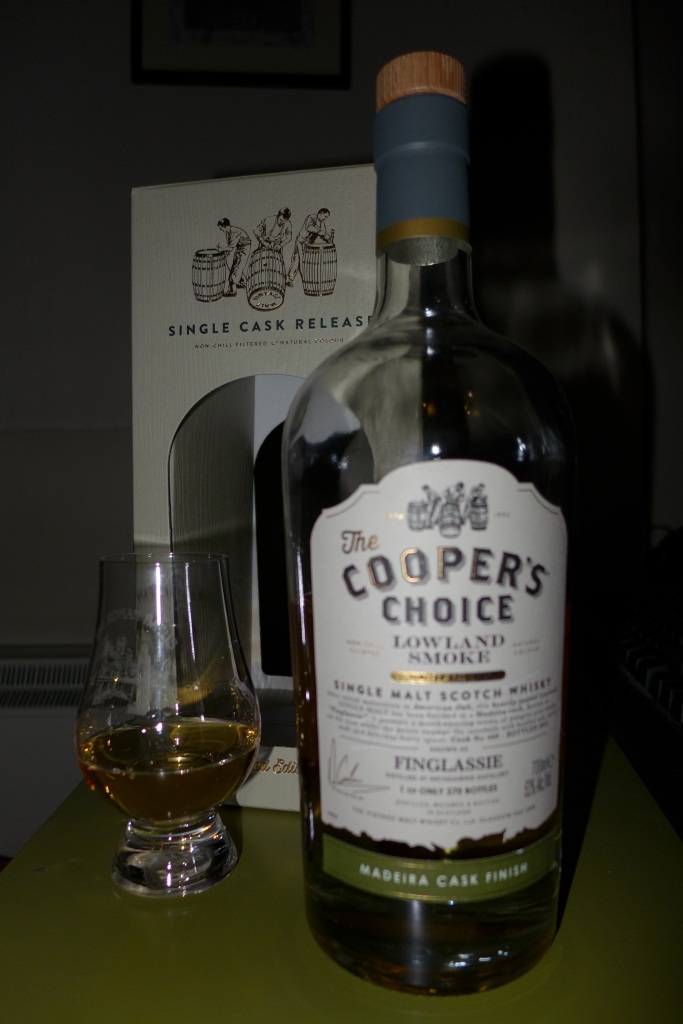
Bushmills: Causeway Collection: 1991: Madeira Cask (Irish Single Malt Whiskey: 30 years: 50.2% ABV)
Visual:Deep bronzed gold. Fast thick streaks come from the spirit.
Nose: Big. Christmas pudding. Sherry trifle to sherry cream. Lots of raisins and sultanas. Suet. Crushed almond. Orange skin. Water adds sugared almond notes.
Body: Thick and sticky. Lime zest. Sultanas. Malt loaf. Orange skin. Suet. Sugared almonds. Lemon zest. Toffee. Water makes oily and more nutty.
Finish:Raisins. Sticky. Malt loaf. Drying. Suet. Dry fudge. Water makes spicier. Turmeric and paprika. Slight liquorice.
Conclusion: Whew, this is the biggest I have ever felt a Bushmills get, and previous Causeway collection releases were pretty big!
Neat it has a booming aroma, detectable from far from the glass. It is thick and sticky, but with no real alcohol burn – lots of alcohol weight, sure, but no burn. It has lots of dark fruit notes, Christmas Pudding like – with lots of the spirity cream notes to go with it – which is not unexpected for a whiskey that has spent so darn long in odd Madeira casks like this.
What is unusual though, is that you can taste the orange, lemon and lime citrus notes that I always associate with the house character of Bushmills Distillery. Somehow they have not vanished beneath 30 years on Madeira wood. They are not heavy notes, and not always present, but they are there- fresh bright notes against this sticky dark fruit beast.
Water does not really help, but nor does it make it bad, it just feels not quite as good. It makes it a more gentle and more generic sweet and nutty whisky, a bit more spicy with that was which is generally not my favourite style in a whisky. So my advice is to keep this one neat – even at 50% abv it doesn’t need the water to be easy to drink – the Bushmills character and 30 years of ageing does that wonderfully already.
It isn’t my favourite of the three Causeway collections I have now tried – that is a toss up between the 2000 and the 1997 with the 1997 being just in the lead at the moment, but every single one I have tried has been amazing – so this is still incredibly impressive.
This is a genuinely great dram that I unfortunately can not normally afford – even the 1997 is out of my normal price range and the 2000 is a stretch to grab! Still, due to this wonderful set I got to try them all and this is still a wonder of matching high abv with smooth character, and dark fruit with citrus notes.
Silly expensive normally, but that is the whisky industry these days, still a great dram.
Background: So, same as in Bushmills 16 and 1997 notes before “Ok this is incredibly good value. I picked up a set of mini Bushmills from The Whisky shop. It had 3 cl of Bushmills 10,16,21, Causeway Collection 2000 Port cask, 1997 Rum cask and 1991 Madeira cask. For 30 quid. The 1991 Madeira cask goes for 695 quid a bottle, which works out at just short of 30 quid for 3cl of that alone! I have no freaking clue how they sell this for 30 pounds. Any which way, a must grab for me. “ So this is the 1991 Madeira cask mentioned there, so, worth the cost of the box alone. I still cannot get over how they managed to do this set for such a low price. I’ve been a Bushmills fan for ages, but these Causeway bottlings have generally been outside my price range so was very happy to give them a try here. Music wise I went with Laura Jane Grace: At War With the Silverfish for audio backing.










